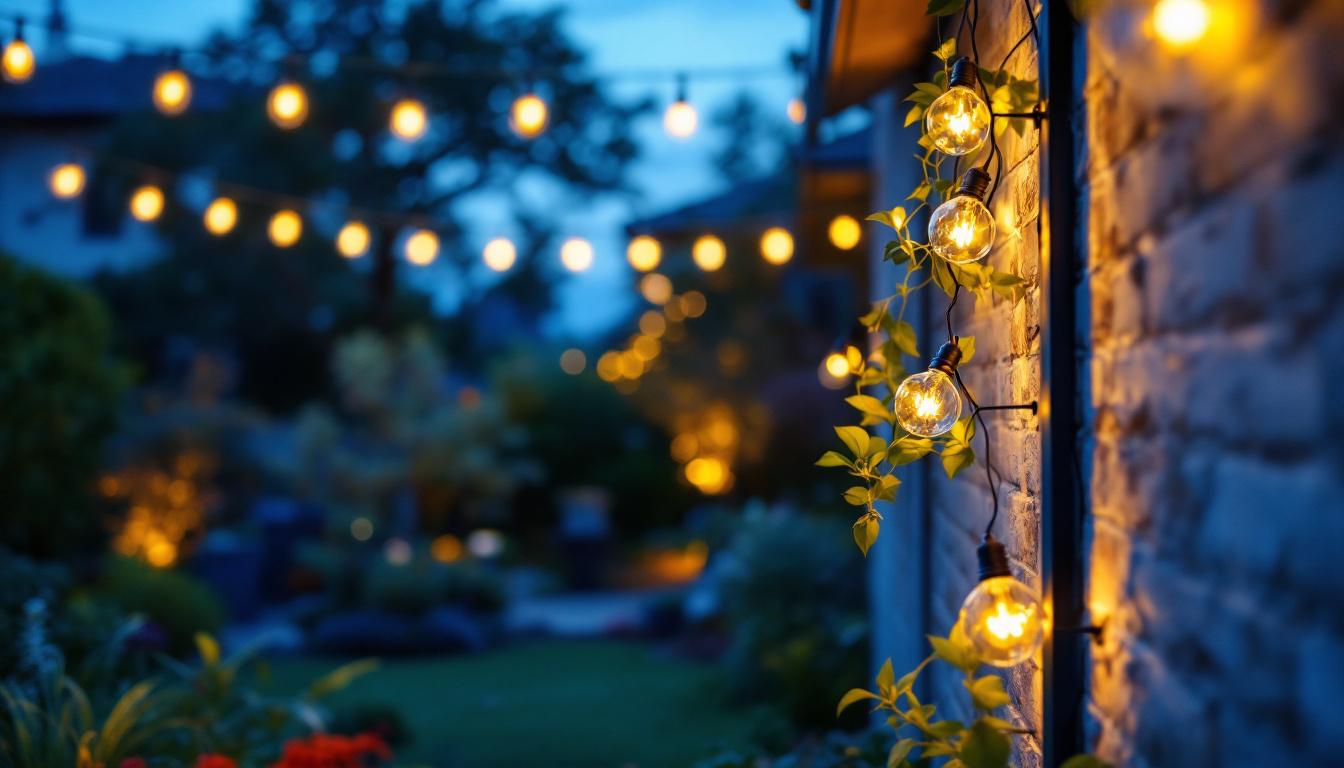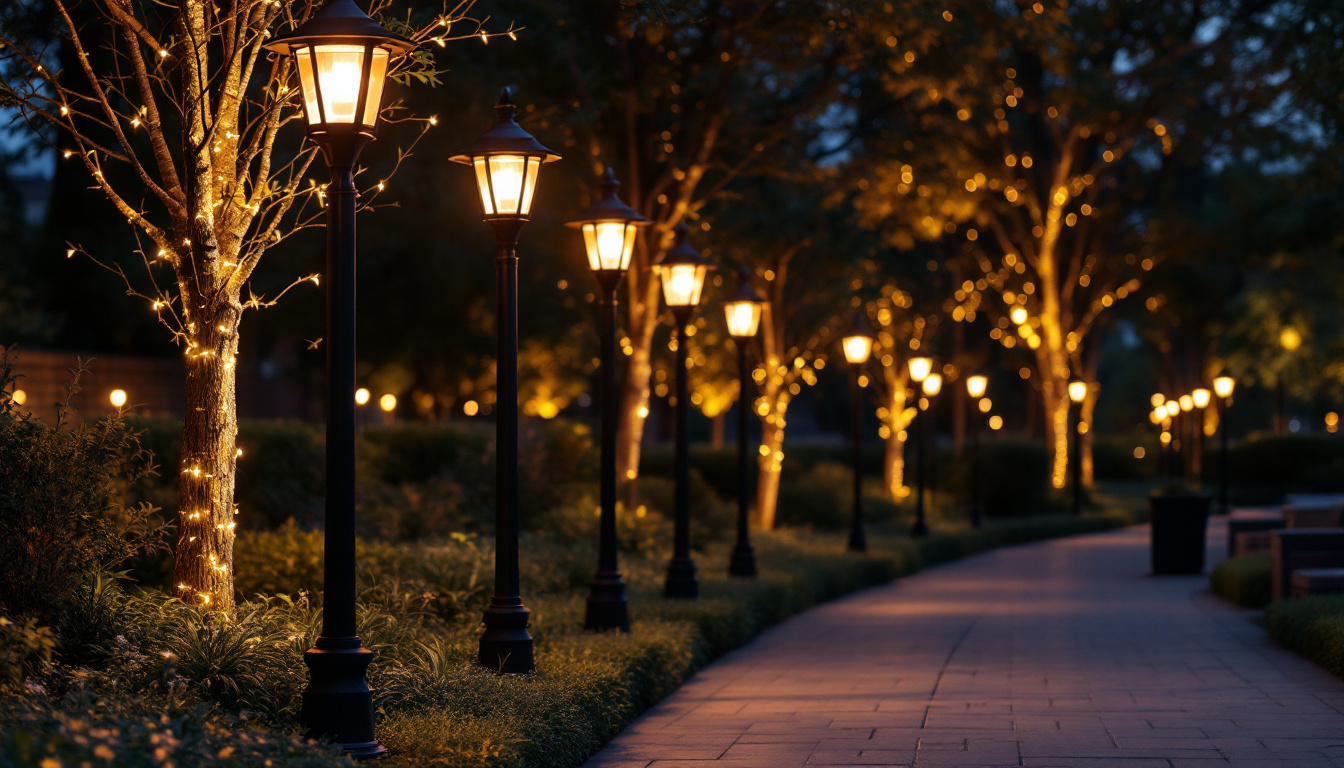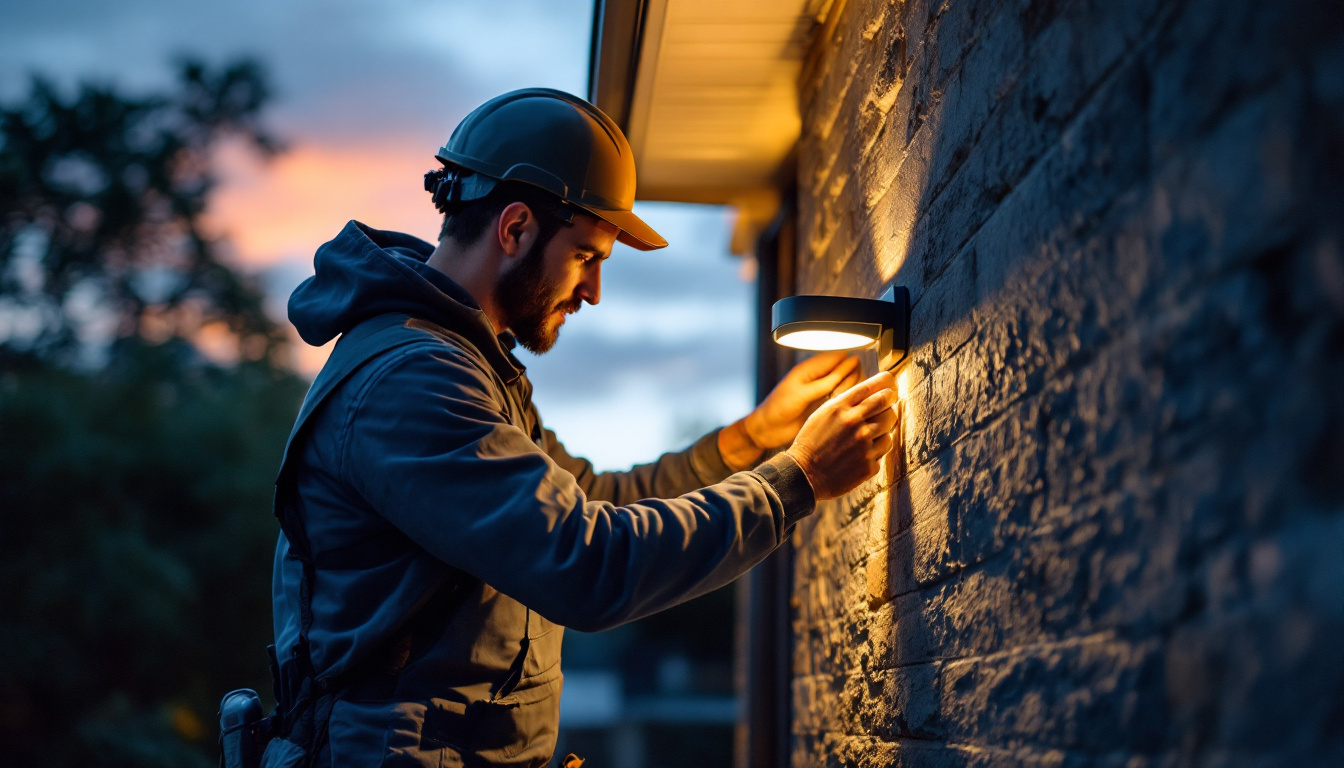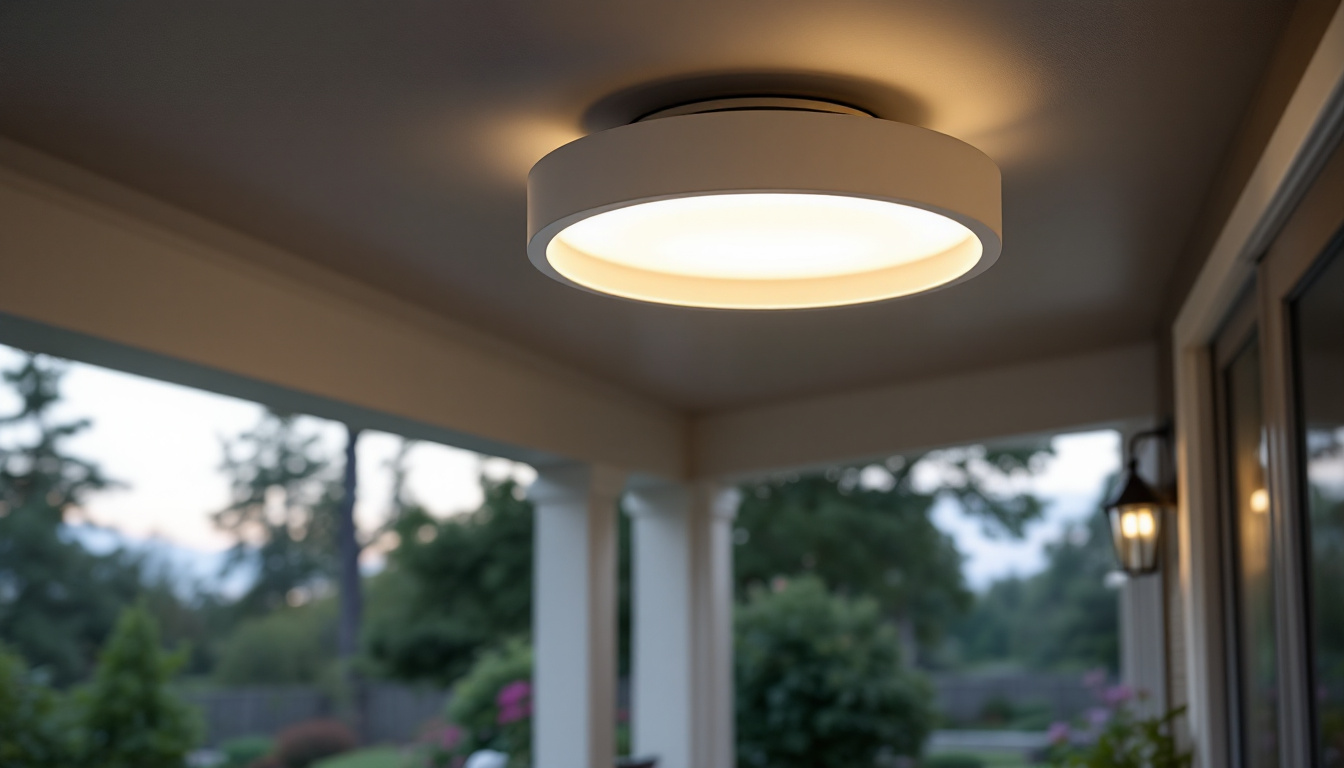
In the ever-evolving world of outdoor lighting, contractors face the challenge of staying ahead of trends while meeting the diverse needs of clients. As technology advances and design preferences shift, understanding the nuances of outdoor lighting becomes essential. This article aims to simplify the complexities surrounding outdoor lights, providing valuable insights and practical tips for lighting contractors.
Before diving into specific types of outdoor lights, it is crucial for contractors to grasp the fundamental principles of outdoor lighting. This understanding lays the groundwork for effective design and installation, ensuring that projects not only meet aesthetic standards but also fulfill functional requirements. Factors such as light intensity, color temperature, and placement play significant roles in how outdoor spaces are perceived and utilized. For instance, warmer light tones can create a cozy atmosphere, while cooler tones may be more suitable for modern or commercial settings.
Outdoor lighting can be broadly categorized into several types, each serving distinct purposes. Pathway lights, for instance, illuminate walkways and driveways, enhancing safety and accessibility. Floodlights, on the other hand, provide broad illumination for larger areas, making them ideal for security purposes. In addition to these, there are also string lights and lanterns that can add a whimsical touch to patios and gardens, creating inviting spaces for gatherings and relaxation.
Additionally, accent lighting highlights specific features, such as trees, sculptures, or architectural elements, adding depth and character to outdoor spaces. This type of lighting can dramatically transform the appearance of a landscape at night, drawing attention to unique features and creating focal points. Understanding these categories allows contractors to recommend appropriate lighting solutions tailored to the unique needs of each project, ensuring that each space is both functional and visually appealing.
When designing outdoor lighting, several factors come into play. The first consideration is the intended use of the space. For example, a residential backyard may require a different lighting approach than a commercial parking lot. Understanding the client’s vision and the functionality required is paramount. Moreover, the local climate and environmental conditions should also be taken into account, as these can affect the longevity and performance of outdoor lighting fixtures.
Another critical aspect is the balance between aesthetics and practicality. While beautiful lighting can enhance the ambiance of a space, it should also provide adequate illumination for safety and security. Contractors must find a harmonious blend of these elements to create effective outdoor lighting designs. This often involves selecting fixtures that are not only stylish but also durable and energy-efficient, such as LED options that reduce energy consumption while providing bright, reliable light. Additionally, the strategic placement of lights can minimize glare and shadows, ensuring that all areas are well-lit without overwhelming the senses.
As sustainability becomes increasingly important, energy efficiency in outdoor lighting is a topic that cannot be overlooked. Lighting contractors are in a unique position to educate clients about the benefits of energy-efficient solutions, such as LED fixtures.
LED lights have revolutionized the outdoor lighting landscape. They consume significantly less energy compared to traditional incandescent or halogen bulbs, resulting in lower electricity bills for clients. Additionally, LEDs have a longer lifespan, reducing the frequency of replacements and maintenance efforts.
Moreover, LED technology has advanced to offer a range of color temperatures and brightness levels, allowing contractors to create customized lighting effects that cater to client preferences. By promoting LED options, contractors can position themselves as environmentally conscious professionals who prioritize sustainability. The ability to choose between warm and cool light tones means that outdoor spaces can be tailored to enhance the ambiance of gardens, pathways, and patios, making them more inviting and functional for evening use.
Furthermore, the durability of LED fixtures means they are less susceptible to damage from weather conditions, making them ideal for outdoor applications. This resilience not only contributes to lower maintenance costs but also ensures that outdoor spaces remain well-lit and safe throughout the year, regardless of environmental challenges.
The rise of smart technology has transformed outdoor lighting, offering contractors innovative solutions to enhance their projects. Smart outdoor lights can be controlled remotely via smartphones or integrated into home automation systems, providing convenience and flexibility for clients.
These systems often include features like motion sensors, timers, and adjustable brightness settings, allowing for tailored lighting experiences. By incorporating smart lighting solutions, contractors can appeal to tech-savvy clients and provide added value to their services. The integration of smart technology not only enhances user experience but also promotes energy conservation, as lights can be programmed to turn off when not in use or dim during certain hours.
Moreover, smart outdoor lighting can contribute to enhanced security measures. With features such as motion detection and remote monitoring, homeowners can receive alerts and control their outdoor lighting from anywhere, deterring potential intruders and providing peace of mind. This added layer of security can be a significant selling point for contractors, as clients increasingly seek solutions that combine aesthetics with practicality and safety.
Effective installation is crucial for the success of outdoor lighting projects. Lighting contractors must adhere to best practices to ensure that fixtures are not only functional but also visually appealing. Proper installation techniques can significantly impact the longevity and performance of outdoor lights.
Before installation begins, a well-thought-out lighting layout is essential. Contractors should assess the outdoor space, taking into consideration the architectural features, landscaping, and intended use of the area. A detailed plan helps in determining the optimal placement of fixtures to achieve the desired lighting effects.
Utilizing tools like lighting design software can aid in visualizing the layout and making necessary adjustments before the installation process commences. This proactive approach minimizes errors and enhances overall project efficiency.
Outdoor lighting systems often require electrical wiring and connections, which must be executed with precision. Contractors should follow local electrical codes and regulations to ensure safety and compliance. Using weatherproof materials and fixtures is essential to protect against the elements, prolonging the lifespan of the lighting system.
Additionally, labeling circuits and connections can simplify future maintenance and troubleshooting, providing a clear reference for both contractors and clients.
Once outdoor lighting systems are installed, ongoing maintenance is vital to ensure optimal performance. Lighting contractors can offer valuable services to clients by providing maintenance plans that address common issues and extend the life of the lighting fixtures.
Conducting regular inspections of outdoor lighting systems can help identify potential problems before they escalate. Contractors should check for burnt-out bulbs, damaged fixtures, and signs of wear and tear. Addressing these issues promptly can prevent costly repairs and ensure that clients enjoy consistent lighting quality.
Moreover, seasonal maintenance, such as cleaning fixtures and adjusting timers, can enhance the overall performance of outdoor lights. Educating clients about the importance of maintenance can foster long-term relationships and encourage repeat business.
Despite careful planning and installation, issues may arise with outdoor lighting systems. Contractors should be equipped to troubleshoot common problems, such as flickering lights, inconsistent brightness, or complete failures. Understanding the underlying causes of these issues—be it faulty wiring, incorrect bulb types, or environmental factors—can expedite the resolution process.
Providing clients with troubleshooting tips can empower them to address minor issues independently, enhancing their satisfaction and trust in the contractor’s expertise.
Every outdoor lighting project is unique, and contractors must be prepared to offer customized solutions that align with client preferences and project requirements. This adaptability is key to building a successful lighting business.
Offering consultation and design services can set a contractor apart from competitors. By engaging with clients early in the process, contractors can gain insights into their vision and preferences. This collaborative approach fosters a sense of ownership and satisfaction for clients, leading to successful project outcomes.
Utilizing design software to create visual representations of proposed lighting solutions can help clients visualize the final product, making it easier for them to make informed decisions. This level of service not only enhances the client experience but also establishes the contractor as a trusted advisor in outdoor lighting.
The outdoor lighting industry is dynamic, with trends and technologies constantly evolving. Lighting contractors should stay informed about the latest developments, from innovative fixtures to design trends. Attending trade shows, participating in industry webinars, and engaging with professional organizations can provide valuable insights and networking opportunities.
By staying updated, contractors can offer clients cutting-edge solutions that enhance their outdoor spaces while positioning themselves as industry leaders.
Outdoor lighting is a multifaceted field that presents both challenges and opportunities for lighting contractors. By simplifying the complexities of outdoor lighting—understanding the basics, promoting energy efficiency, adhering to best practices, and offering customized solutions—contractors can elevate their services and meet the diverse needs of their clients.
As the demand for outdoor lighting continues to grow, embracing innovation and maintaining a commitment to quality will ensure that contractors thrive in this competitive landscape. By prioritizing education, collaboration, and adaptability, lighting contractors can illuminate outdoor spaces with confidence and creativity.
Ready to transform your outdoor lighting projects with the finest products at unbeatable prices? Look no further than LumenWholesale, where we provide contractors with spec-grade lighting that combines quality, affordability, and convenience. Elevate your service offerings with our extensive selection of reliable, high-performance lighting solutions. Enjoy the benefits of bulk buying without the hassle, including free shipping, and say goodbye to inflated markups. Choose LumenWholesale for the best value in wholesale lighting and light up your clients’ outdoor spaces with confidence and creativity.

Discover the essential role of pole lights in modern lighting projects and why every contractor should prioritize them.

Discover the key challenges lighting contractors face with emergency lights batteries, from maintenance hurdles to technological advancements, and learn strategies to overcome these obstacles for optimal performance and safety..

Discover how the latest advancements in security lighting are transforming the way contractors enhance efficiency and safety.

Discover how to future-proof your lighting projects with outdoor flush mount ceiling lights.